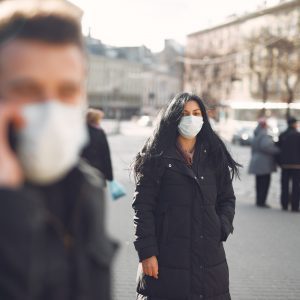Creating a safe working environment is a complex issue and requires a concerted effort by all stakeholders over a sustained period of time.
Our industry is particularly hazardous, and the environment lends itself to employees being exposed to dangerous machinery and adverse environmental factors like dust and noise. Health and safety are thus pressing issues for us, and we give them a lot of thought and attention.
We have learned that there is no single formula for creating a safe workplace — but there are certain basic principles that can be adapted to create the all-important safety culture without which the desired behaviours will never take root. To achieve this, the company has to engage effectively with the workforce, and empower them to identify risks in their work environments and take appropriate action. The aim is to make employees and managers partners in the creation of a safe workplace.
It is vital to move towards behavioural safety, which requires employees to act with safety in mind as a matter of course. To achieve this requires a sustained effort from everyone.
There are several principles that are key to achieve this. Everyone should understand the SMART goals of the safety programme. The SMART goals must be specific, measurable, applicable, relevant and should take place within a designated time frame.
It is also very important to create a safe environment that is both inspirational and empathetic. Safety has to become internalised into the way people approach their work. A key element is the quality of the corporate leadership. In particular, executives and managers have to show that they have internalised the safety culture. Talking about it is not enough. Companies have to create a safety culture that will result in colleagues being able to jointly assess and suggest mechanisms to ensure a safe working environment.
A third foundational principle is that everybody in the company has to buy into the safety culture; it must become the way everybody does things at work. One group cannot opt out. Education and communication are thus key levers in building the culture as well as helping people to acquire the specific competences they need to act safely.
At PPC, we use a simple yet highly effective way of actualising these principles. We call it Snakes and Hazards, and it uses well-known characteristics of three common African snakes to make people aware of the kinds of safety risks they face, and what to do about them.
The puff adder denotes the concealed hazard that an individual must point out to colleagues. The python, by contrast, is the hazard that can start off as small and harmless, but that can become life-threatening if it is allowed to grow. A third hazard is denoted by the cobra, just as this snake rears up in threat and warning, this type of hazard is both obvious and very real.
This hazard typology makes it very easy to assess the risks in any plant, and has the virtue of being readily understandable across cultures as we have found in our plants across South Africa, Rwanda, Zimbabwe, the DRC, Botswana and Ethiopia. More importantly, it starts meaningful discussions about workplace safety that are conducive to the creation of a safety culture that is integrated into working patterns.
When it comes to safety, regulation and physical safety equipment have roles to play, but they will always have limits. For genuine workplace safety, there is only one approach that works – ingraining safety into the way people behave at work. That takes time and effort but then a safe workplace is a priceless asset.
Hardie de Beer is the Executive: Technical & Lime at PPC.









